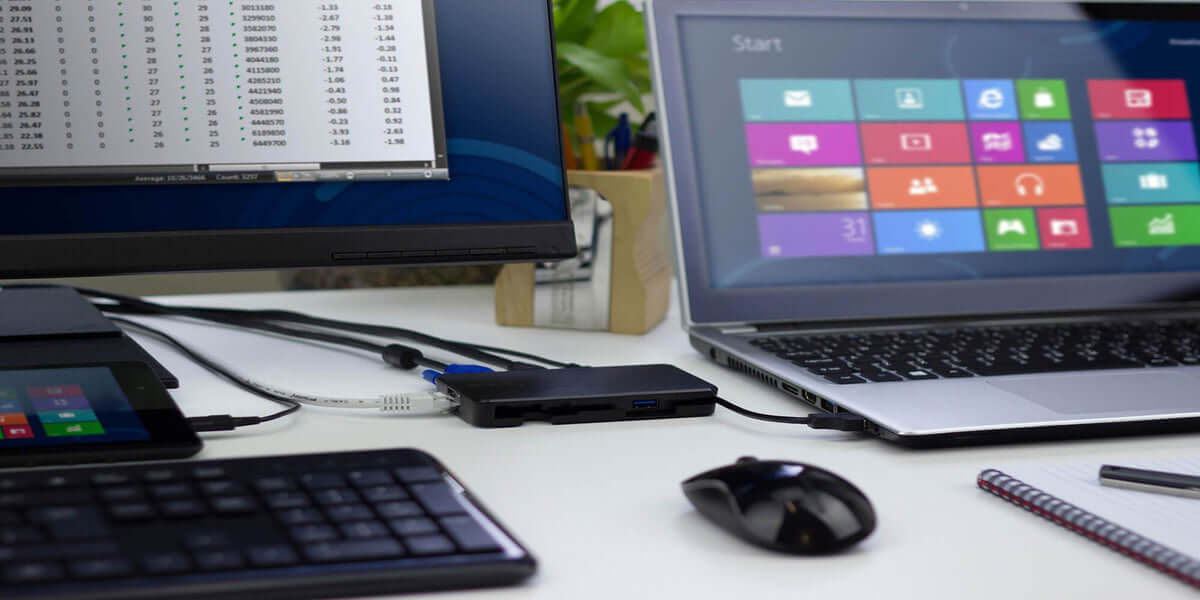“Too Close or not to Close,” That Is the Question
December 12, 14
- Posted in: Tech Talk by Kevin Quinn, Thee DocKtor

Many users coming from the olden days of using a snap-in type dock are used to closing the lid or their PC when using a docking station. However, in today's world of Universal Docking Stations, the DocKtor recommends leaving the lid open to use the local display. It can be used for one more desktop or other application windows or just pushing something aside from the main display, etc. Users should note that Windows 7 and Windows 8.1, and Windows 10 may treat a closed lid differently. This is most likely due to Windows 8.1/10 being more touch-friendly OS versions. That is, without touch (or a mouse), many applications are unusable so The DocKtor is guessing Microsoft changed what "Do nothing" means is the Control Panel\All Control Panel Items\Power Options\System Settings on the Surface for instance.
In Windows 8.1/10 on most touch enabled PCs "Do nothing" really means for the PC to do nothing. When the lid is closed, the monitor is still active and anything on that monitor stays there. In fact, other application windows can be moved to the local monitor even though the user cannot view them while the lid is down (clam shell). In Windows 7 "Do nothing" usually does something. When the lid is closed in Windows 7, the application windows that were on the local PC monitor reopen on one of the external monitors and the local screen is deactivated and turned off. I say "usually" above because it appears every manufacturer implements "Do Nothing" differently in W8.1/10, maybe even from model to model. For instance, on a Lenovo X1 Carbon G1, Lenovo T430, and HP Folio 9470m setting "Do Nothing" in W8.1/10 behaves like it did in W7. However, on both the Asus Zenbook UX31A and touch-enabled UX301 "Do Nothing" does nothing. Again, the DocKtor recommends to leave the lid open and active, and to set the "When I close the lid" setting to "Sleep", "Hibernate", or "Shut Down". Besides, it must be active to login to Windows anyway. For a OS-X, please refer to https://support.apple.com/en-us/HT201834 . For Android and Linux, well, let me know.




